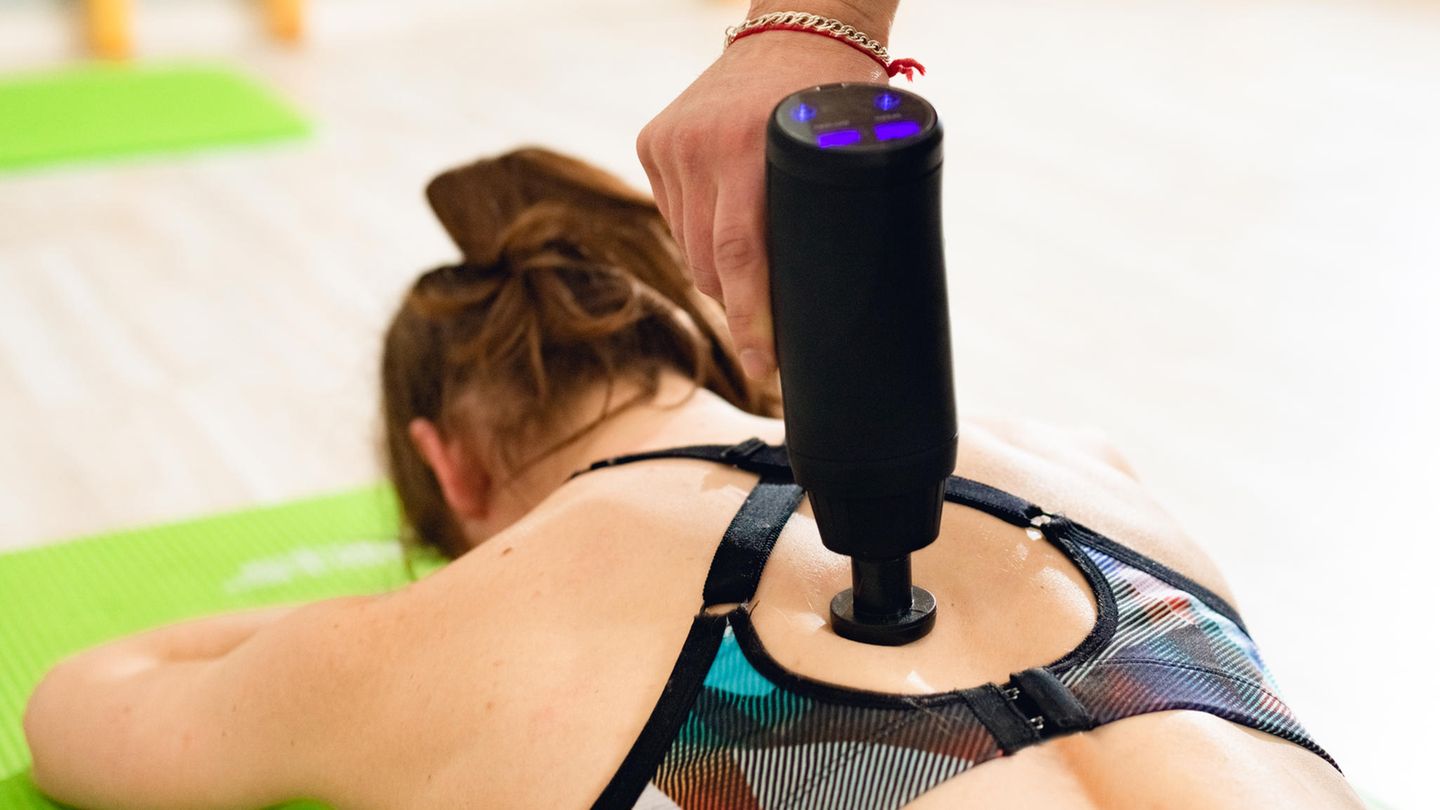They are supposed to be miracle weapons against sore muscles and everyday tension. But do massage guns do what the advertising promises? The verdict of Stiftung Warentest is clear.
The testers from Stiftung Warentest put eleven massage guns with a price between 40 and 270 euros to the test. Everything was there, from the surprisingly cheap discount model from Lidl to the premium gun from Therabody. The results were less diverse. Not a single one of the tested, and sometimes very expensive, devices was convincing across the board. As is so often the case, the price was not necessarily a guarantee of quality.
Miracle weapon massage guns?
Massage guns are a great thing. Instead of having a physiotherapist treat your tense neck, aching back muscles or a stiff marathon calf, you can sit on the sofa at home and soften your muscles yourself. Even better: your partner can take care of your tired muscles, which is particularly useful in places that are difficult to reach. It’s not rocket science. Depending on the size of the muscle group, an attachment is put on the gun, which hits the tissue at the pain points at different frequencies. What this self-treatment achieves is another matter. Current studies suggest that muscles recover more quickly from strain when used correctly. Treatments before training or competition are also said to improve mobility in the short term. Any advertising promises beyond this should be treated with caution.
The Stiftung Warentest testers gave their testers eleven current models. The core competency of the devices, namely their massage capabilities, accounted for 40 percent of the test. Other criteria included handling, durability, possible harmful substances used and safety.
Small but mighty: Mini models convince with compromises
As a whole, none of the massage guns tested was convincing in the final analysis. With a test score of 2.7, the in the final evaluation. The device from the specialist for fascia and regeneration products, now based in Switzerland, was convincing in terms of handling and stood out due to its long battery life. It is also one of the smallest and, at just 550 grams, is light in the hand. At around 150 euros, it is in the middle range in terms of price. In the important “Massage” category, two test models performed even better. The Stiftung Warentest therefore awarded the and thus, alongside the Fascia Gun, the smallest massage tool in the test. It proved to be very reliable when working on the muscles. However, an expert found high levels of the harmful substance benzoperylene in the foam ball attachment, which fortunately were below the limit value of the GS mark. The MG 99 costs around 70 euros, which makes it the clear price-performance winner in this test.
Even better massaged the Nevertheless, the tool, which cost 179 euros, failed the test. Experts found naphthalene in the casing, which is harmful to health and the environment, in quantities that are no longer covered by the GS mark.
In conclusion, it can be said that eight of the eleven massage guns were rated “satisfactory” in the test. Given the hype surrounding these miracle weapons for stressed muscles, this is a sobering result.
The full test is available for a fee at .
More information can be found here.
Source: Stern
I’m Caroline, a journalist and author for 24 Hours Worlds. I specialize in health-related news and stories, bringing real-world impact to readers across the globe. With my experience in journalism and writing in both print and online formats, I strive to provide reliable information that resonates with audiences from all walks of life.




